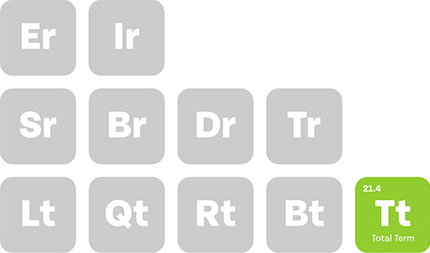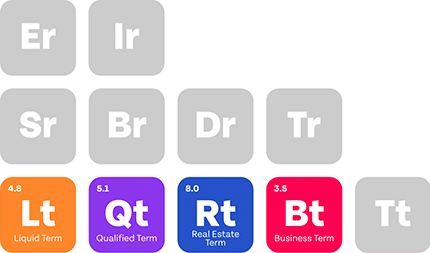Every doctor knows that malpractice insurance is essential to protect their career. However, few fully understand why malpractice tail coverage is so important.
Even if you plan on staying at your current position until you retire, you cannot fully control every factor that would make that a reality.
For example, you might be in good standing with your healthcare organization. However, the organization itself might be failing financially and go under. Where would that leave you?
Do you still need malpractice tail coverage if your current malpractice policy is about to end and you plan on changing up insurance companies?
These questions and more are going to be answered with this full guide to physicians’ malpractice tail coverage.
Table of Contents
What Is Malpractice Tail Coverage?
Malpractice tail coverage, also known as “extended reporting period” (ERP) coverage, is a type of insurance that is crucial for physicians and healthcare professionals.
It provides protection for claims that may arise after the physician has canceled their malpractice insurance policy or has retired
Why Is Malpractice Tail Coverage a Necessity for Physicians?
Physicians open themselves up to the unnecessary risk of being sued without protection when they don’t have malpractice tail coverage.
Malpractice tail coverage protects you when you are between jobs or just transitioning from one job to another. It also covers you if you are unexpectedly terminated. Medical malpractice claims can take years to surface. Tail coverage ensures that physicians are protected even after their primary malpractice insurance policy has expired.
Tail coverage basically gives you peace of mind for any unexpected claims. Without tail coverage, physicians would be personally liable for any claims made after the policy’s termination, which could result in substantial financial and legal consequences.
Tail coverage is often considered such important protection for both the physician and the patient. Therefore, some state legislatures require you to have tail coverage to practice medicine.
The same goes for many hospitals. If you are looking for a job, many employers would rather hire a new doctor with no prior insurance than pay for tail coverage for an incoming physician.
Claims-Made vs. Occurrence Coverage
There are two types of malpractice tail coverage.
Claims-Made Coverage
A claims-made malpractice tail coverage policy will cover a claim under two circumstances. If it had both occurred during the policy period and had been reported during the policy period.
Occurrence Coverage
Therefore, occurrence coverage insurance will cover claims that occurred during the policy. Occurrence policies are an excellent choice for your liability coverage. Yet claims-made is the most common type of malpractice tail coverage offered. Simply due to the fact that it is cheaper.
Learn more: Claims-made vs. Occurrence-based Malpractice Insurance Coverage
Extended Reporting Endorsements vs. Prior Acts Coverage
Extended reporting endorsements, also known as tail coverage, covers claims from your old malpractice coverage policy even after the policy period ends.
Prior acts coverage, also known as nose coverage, is coverage from a new policy. Also called “retroactive date coverage,” this will cover any claims before your sign-up date. As the name suggest, this new policy will transfer the retroactive date from your own policy to the new one.
The retroactive date is the day you first signed up for your first claims-made policy. It is important to know this day. You will want to ensure that there are no holes in coverage during this extended reporting period.
Example: If a policy has nose coverage with a retroactive date of, for example, January 1, 2010, it means the policy will cover claims that arise from incidents that occurred on or after that date. Claims arising from incidents before the retroactive date are not covered.
Consent to Settle Clause
A Consent to Settle clause is often referred to as a “consent to settle provision” or “consent to settle requirement”. While the names are slightly different, they are all the same thing. It is a clause requiring the insurance carrier to ask your permission to settle. This means that you have to sign off on it before any settlement is made.
Here’s how sucah a clause typically works:
1. Insurer’s Right to Settle:
Under a standard malpractice insurance policy, the insurance company has the right to investigate, defend, and potentially settle a malpractice claim or lawsuit on behalf of the insured healthcare provider. This is to protect the interests of both the insurer and the insured.
2. Consent Requirement:
However, with a “consent to settle” clause, the insurance company is legally required to obtain the consent or approval of the insured before settling a claim or lawsuit. In other words, the insurer cannot settle a claim without the agreement of the healthcare provider.
3. Insured’s Control:
This provision gives the healthcare provider more control over the decision to settle or litigate a malpractice claim. The insured has the final say in whether to accept a settlement offer or take the case to court. The insurance company cannot make this decision unilaterally.
The primary advantage of a “consent to settle” clause is that it allows the healthcare provider to have more say in the outcome of a malpractice claim. They can consider various factors, such as the potential impact on their professional reputation, the financial implications of a settlement, and their belief in the merit of the claim, before making a decision.
At times, an insurance carrier will want to simply settle a claim to save them some money. But you will have your professional career on the line, not just a bill to pay. This clause protects you against the insurance settling when it’s best for them but not for you. You would think that settlement of any kind would be best for both of you, but this is not always the case.
Note that not all malpractice insurance policies include a “consent to settle” clause. The presence or absence of this clause can affect the terms and cost of the insurance policy.
Related: Mag Mutual Insurance: What You Need to Know
Hammer Clause
A Hammer clause is a clause that goes alongside a Consent to Settle clause. A Hammer Clause states that you can reject a settlement that the insurance carrier wants to make. However, you will be responsible for the overage if you lose the case in the end.
You would be responsible for paying:
- Any damages paid
- The cost of defense incurred if you lose the case — above what the insurance carrier was ready to settle for
Here’s how a “hammer clause” typically works:
1. Insurer’s Right to Settle:
Under a standard professional liability insurance policy, the insurance company has the right and responsibility to investigate, defend, and settle a claim or lawsuit on behalf of the insured. The insurer will make decisions that it believes are in the best interest of both parties.
2. Consent Requirement:
However, when a “hammer clause” is included in the policy, the insurer must obtain the consent or approval of the insured before settling a claim. In other words, the insurer cannot settle a claim without the agreement of the insured.
3. Insured’s Decision:
If the insurer proposes a settlement, the insured has a choice to make. They can either consent to the proposed settlement, in which case the insurer will proceed with it, or they can refuse to consent. If the insured refuses to consent to the settlement, the “hammer” part of the clause comes into play.
4. Hammer Clause Effect:
When the insured declines to accept a reasonable settlement offer and triggers the “hammer” clause, the insurer’s liability is typically capped at the amount of the proposed settlement. In other words, if the claim ultimately results in a judgment or settlement higher than the original offer, the insured may be responsible for the excess amount, in addition to any legal expenses incurred.
As a consent to settle clause protects you, the hammer clause protects the insurance carrier.
Related: Malpractice Payouts: What to Expect
Defense Costs
There are two possible scenarios when it comes to the cost of defense.
Inside Policy Limits
When the defense cost is considered inside policy limits, they deduct any cost accrued that covers your attorney fees or court fees from your set liability limits. This leaves you less money to cover any potential award.
Example: If a physician’s malpractice insurance policy has a total limit of $1 million, and $200,000 is spent on defense costs for a claim, there would be $800,000 remaining to cover any settlement or judgment for that claim.
Outside Policy Limits
If you have an outside policy limits cost of defense, it will not affect the amount of liability. However it will be paid by your insurance carrier separately.
Same example as above: if a physician’s malpractice insurance policy has a total limit of $1 million and defense costs are “outside policy limits,” the entire $1 million remains available to cover any settlement or judgment, regardless of the amount spent on defense costs.
This is the obvious best choice but comes with a heavier price tag.
How Does the Insurance Company Define a Claim?
The definition of a “malpractice claim” in the context of medical malpractice insurance is crucial because it determines when and how the insurance company becomes involved in a potential liability situation. It typically revolves around two primary triggers: “incident reporting” and “written demand for damages.”
You should be aware of the definition they included in your policy to know how to proceed when an event has occurred.
Incident Reporting
An “incident” or “occurrence” refers to an event or situation where a patient or their representative believes they have suffered harm or injury due to the actions or inactions of a healthcare provider, whether that is a physician, nurse, or healthcare facility.
“Incident reporting” refers to the process by which such events or potential malpractice situations are reported to the insurance company. An incident report typically includes details about what happened, who was involved, and the nature of the perceived harm.
If your policy defines a claim as incident reporting, this allows the physician to report an incident even if the claim is not made. That way, you can keep the claim reported inside the policy period even if you aren’t actually sued until years later.
The insurance company’s definition of when an incident becomes a “claim” may vary, but it often, as long as you have reported an event as a potential claim inside the policy period, you will be covered.
Written Demand for Damages
A “written demand for damages” is a formal communication from a patient or their legal representative, demanding compensation for injuries or harm allegedly caused by a healthcare provider’s actions or negligence.
A “malpractice claim” is often triggered when a “written demand for damages” is received by the healthcare provider or their insurance company. This written demand is considered the official notification of a claim, as it indicates the injured party’s intent to seek compensation for their injuries.
The specific requirements for what constitutes a valid “written demand for damages” can vary by insurance policy and jurisdiction, so it’s essential for healthcare providers to understand the criteria in their policy and the laws in their state.
With a written demand for damages as the definition of a claim, the physician has to wait to be sued. Even if an event happened inside the policy period. Therefore, if the physician is sued after the policy period has expired, the insurance company will not cover the damages.
What To Look for in a Malpractice Insurance Carrier
Even the smallest change in policy can make a huge difference in protection. Be diligent in researching the cost of tail coverage.
When deciding on which malpractice insurance carrier to go with, ask yourself these three questions:
1. What type of tail coverage do they offer?
Take note of which tail coverage they offer new insurers — claims-made or occurrence coverage.
Next, determine which would be cheaper — tail coverage from your current policy, or nose coverage from a new policy.
What type of defense cost does this new carrier offer? Inside or outside policy limits? What even are their policy limits?
How do they define a claim? Do they accept incident reporting or require written demand for damages?
2. What are the clauses?
Do they offer the consent to settle clause for your protection? Do they require a hammer clause to be signed?
Are there clauses that you don’t understand?
3. What are their exclusions?
Sometimes, insurance companies write exclusions into the policy that state what incidences they will not cover.
Common exclusions of medical malpractice insurance coverage include:
- Intentional, reckless, and illegal acts causing damage
- Sexual misconduct
- Hospital administrative errors
Insurance companies have the discretion to exclude any event from coverage as long as it’s written in the policy before issuance.
4. What else?
Another thing you will want to know about each insurance company is their AM Best Rating. The AM Best Rating is the rate of the financial health of the company. The highest rating available is an A+. You shouldn’t go with a company that has a rating any lower than an A-.
A lower-rated insurance company could leave you at risk if you do have medical malpractice claims made against you. Since they aren’t in the greatest financial shape, they will do anything to save a few dollars — including giving you a lower standard of protection.
Make sure the insurance company you choose is an admitted carrier, meaning that they are licensed in your state. This gives you some protection even if the company goes out of business because the state’s “guarantee fund” will cover your claims.
Sometimes you cannot get coverage from an admitted carrier. This may be due to past claims or if the nature of your specialty involves high-risk procedures. In this case, you can get an Excess and Surplus Lines Carrier. If you do so, you won’t have access to the “guarantee fund” from the state. However, the state still screens the company and has dubbed it viable.
Remember that the best malpractice insurance carrier for you may depend on your specialty, location, career stage, and specific needs. It’s a good practice to consult with colleagues, advisors, and insurance experts to help you make an informed decision based on your unique circumstances.
If you would like help with your own malpractice insurance needs, please reach out, Physicians Thrive can help.
Related: How Much Does Malpractice Insurance Cost?
Is Negotiation of Malpractice Tail Coverage Possible?
Trying to negotiate a malpractice tail coverage into your physician’s employment contract can be a touchy subject. It may seem like you are accepting the job with a plan to leave. However, many health organizations understand the wisdom of having this type of professional liability insurance and don’t take it personally.
Many times, they awarded this tail coverage to the physician with a contingency. If the physician is terminated with due cause or the physician breaks a contract prematurely, the physician must then be responsible for the cost of the tail coverage.
Either way, it does no harm to try to add tail insurance to the medical malpractice insurance policy in the initial contract. If they reject this request, wait a few years and try again when your contract renews. At this time, the organization may trust your intentions more and include malpractice tail coverage in your contract.
Related: Can You Negotiate Physician Contracts?
Is There Such a Thing as Free Tail Coverage?
At times, they offer tail coverage at no cost to physicians who have paid for years on the policy.
This is especially true if the physician is approaching the age of retirement.
Once retired, they pose very little risk of having a claim against them, since they will no longer be practicing medicine.
How to Shop for Medical Malpractice Tail Coverage
You can shop for malpractice insurance in one of two ways.
Agent
If you use an agent, they will be working for the insurance company. This means that they will not always look out for the physician.
With an agent, you will only be able to get one quote from the agent’s insurance company.
Broker
Alternatively, you can use the help of a broker to find a malpractice insurance policy. They work for the client — that’s you — and will do what is in your best interest.
They can get multiple quotes and compare and contrast to help you come to the right decision.
It can be tempting to try to get more than one broker to help you search for malpractice insurance. However, this can actually be detrimental to your endeavor. It’s important that you use just one to keep from being double applied.
Even though it we advise that you try to negotiate the inclusion of malpractice tail coverage in your employment contract, this is difficult to attain.
This means that you must procure your own malpractice tail coverage to protect yourself. And since half of all doctors are sued by the time they are 55, you really don’t want to leave yourself unprotected.
Purchasing tail coverage on your own is risky for any medical professional. All of the different clauses and definitions can be complex. Therefore, having a knowledgeable expert by your side to help you choose the best coverage can protect you.
Contact Physicians Thrive for guidance in choosing malpractice tail coverage, as well as physician contract negotiation.
Get Your Free Malpractice Insurance Quote! It’s easy!
Subscribe to our email newsletter for expert tips about finances, insurance, employment contracts, and more!









































